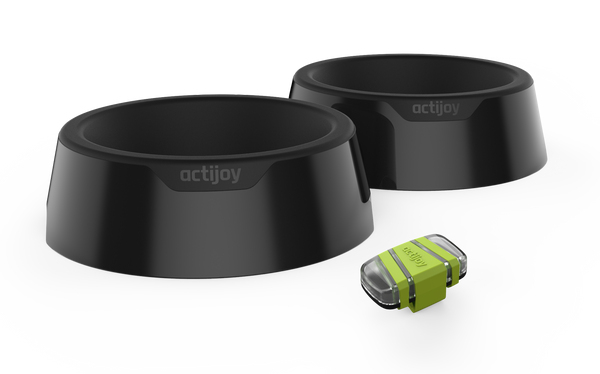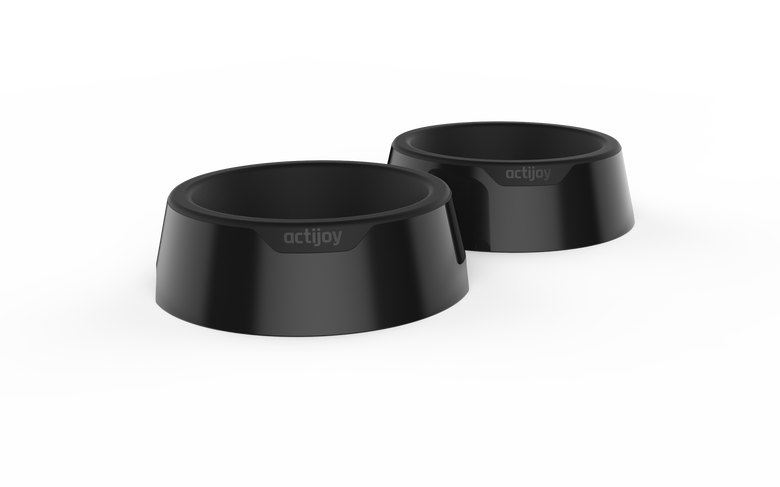Fast Facts About Microchipping Your Dog
Why should I microchip my dog, and will it help us to reunite in case of loss? Is microchip safe for pets? And what are the pros and cons of microchipping? Here, the most frequent questions about microchips in pets will be discussed.

What Is a Microchip and How Does Dog Microchipping Work?
The chip is a small, about 1 cm long and 2 mm wide capsule with a radio transmitter and computer chip that carries a unique ID code. It is applied by injection under the skin, usually on the left side of the neck or between the shoulder blades, using an applicator with a wide and sharp needle.
Is Microchipping Painful?
The needle of the applicator is very sharp, making the procedure painless and fast. It is similar to vaccination for a dog, with the difference that chipping can even be less painful because the vaccine is not injected under the skin. Some veterinarians never implement chips without anesthetic to make the process easier for your pup. If the microchip is implanted correctly, you should not be able to feel it or even tell it's there. Your pet won't notice either.
Benefits of Microchipping Your Pet
"Anything that increases the chances of bringing my missing dog home is a plus!"
That is the most common reason given by pet parents to the benefits of chipping. However, let's sum up the pros of microchipping your dog:
Unique Code for Your Unique Pet
There are many identification methods that you can use, but only chipping is inseparable from your dog. It is like a permanent ID. Besides, it is non-invasive and painless compared to tattoos.
Speedy Reunions
When your dog gets lost, the microchip increases your pup's chances of getting back to you. Likewise, if someone steals your dog, the microchip will reveal the real owner. The chip increases the chances of being reunited in a short time. The first operation performed once your dog reaches the shelter facility is a scan for a microchip.
The ID Tag that Can't Be Lost
Many dogs wear identification tags on their collars. Though, the collar can be torn or lost. Alternatively, some dogs do not wear a collar or harness. Therefore the undeniable advantage of chipping is the inability to lose the chip. The microchip is permanent and can't be separated from your pet.
No Replacement Needed
Chipping is a one-time procedure and does not need to be repeated. However, we recommend that you ask your veterinarian to check your dog's microchip during annual exams to make sure all is working well.
Disadvantages
Migration
On rare occasions, the chip can travel across the shoulder or chest area - therefore, the whole area should be scanned several times. Alternatively, some shelters do the full body scan to avoid mistakes. If your veterinarian periodically scans your dog, you know where the chip is located and if it moves around the area or not. If you notice that the chip significantly changed the location, it is recommended to have your dog chipped once again to make sure the chip is located at the usual spot. You can also get the chips that have anti-migrating mechanisms to ensure they stay in place. Ask your veterinarian about the available options.
Troubles with the Chip Scanning
Some older microchips cannot be read unless a specific scanner is used. However, the vast majority of new chips can be detected by universal dog microchip scanners that are used at shelters. Make sure that the chip used in your dog is ISO compliant, as these chips meet the same standards and are usually scannable with the universal scanner.
Registration Is a Must!
Having your dog microchipped is only the first part of the process. The dog's microchip registration with the national database and keeping the records up to date are the next steps that are needed. The 15-digit (10-digit) unique code does not contain information about the owner, as it is often incorrectly believed. The contact information has to be looked up in the database based on this unique ID number. Registration is usually easy and fast. All you need is the number of the microchip and your contact details you want to use. There is nothing more frustrating than finding out that the stray pet is microchipped, but the chip is not linked to the owner's contact information, or the contacts are outdated.
Associated Fees with Microchip Registration
There are several pet microchip registration databases from where you can choose. Note that some are entirely free, while others charge a one-time fee for the registration (approx. $20). Also, some registries accept your registration only if the specific brand of the chip is used. However, many registries are universal, and you can register with any brand of microchip there.
A Microchip Is Not GPS
Can I track my dog's microchip and location? This question is quite common when it comes to microchips. A microchip is not a GPS or other tracking device. The chip is passive and only turns on when the scanner is nearby.
Side Effects of the Microchip in Dogs
Are there any health risks of microchipping, or can microchips cause cancer? Many studies prove that microchipping is harmless for your pets. However, you can also read stories about health problems that were caused by chips. So, where is the truth? Some dog parents are afraid of electronics embedded in their pet's body. But the chip is a passive part that transmits signals only when being scanned. The chip is also covered by biocompatible materials to eliminate the risk of the body reaction. Thus it is worth mentioning that any foreign material that is put in your dog's body can represent a potential risk for them. There surely were some cases of dog microchip complications, and even sarcoma or tumors developed in the area of the chip. But these cases are rare concerning the fact that millions of dogs are microchipped over the world each year. From our perspective, the health risks of microchipping are not higher than in regular preventive veterinary procedures, considering that the following rules are kept:
-
A registered veterinarian will perform microchipping and will take into consideration the overall health condition of your dog. Geriatric pets, pets with allergies, and those that are sensitive or ill should be excluded from microchipping.
-
The ISO compliant chip will be used.
-
The chip will be applied in the recommended area, and this area will be periodically checked for any changes to the skin.
How Much Does it Cost to Chip Your Dog?
The price varies between $25 and $50 depending on the microchip type and location where you get the procedure. If the microchipping is part of an annual check-up, the price is usually lower. Also, some shelters, pet supply stores, or dog groomers offer this service for affordable prices. However, always make sure that the microchip implementation is performed by a trained professional to avoid any side effects. Microchipping your dog will cost you some money, but it is a small price to pay for peace of mind that your lost pup finds the way home.
It is without any doubt that the benefits of microchipping outweigh the risks. But make sure that you complete the whole process by registering with a microchip registry and checking your contact details are up to date regularly. Protect your pets by microchipping them, and increase the chances you'll both be reunited if anything happens.
Download a free Actijoy dog care app from App Store or Google Play and make a note of the chip ID number there. You will not only have the chip ID no. 24/7 available in the app, but with the Actijoy Healthbook, you can easily share this data with your vet, significantly simplifying and improving the care of your dog.



